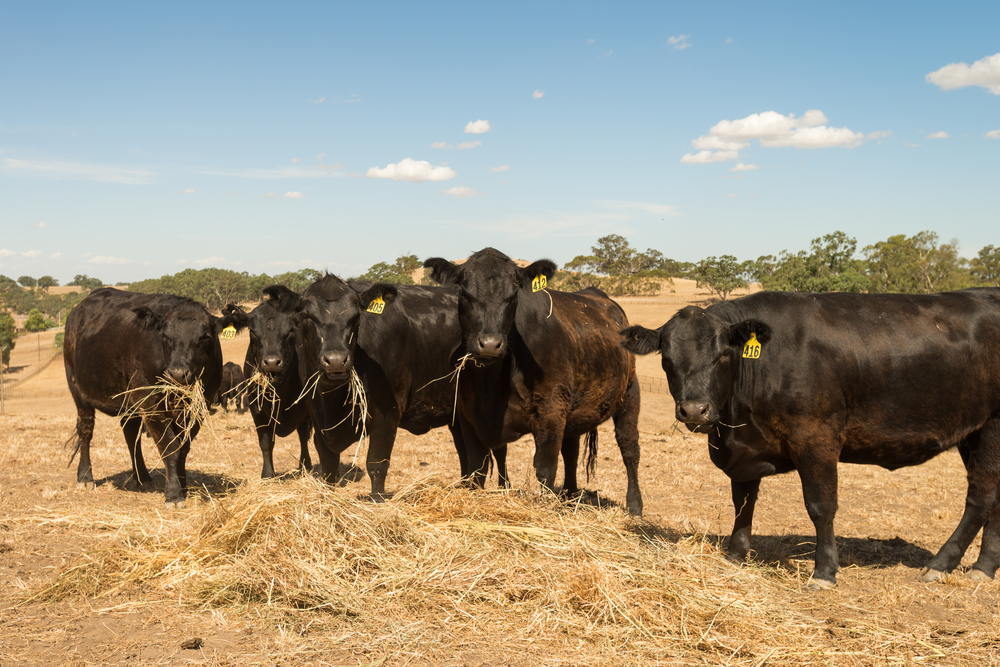Regarding the food industry, beef and dairy cattle hold a significant place. These animals are a source of income for many people and nutrition for countless others. As the costs of raising cattle increase, ensuring they receive the proper nutrition is more important than ever.
Ranchers and livestock managers must be knowledgeable about cattle feeding to keep their herds healthy and thriving.
This article will provide a comprehensive guide on beef and dairy cattle feeding. We’ll discuss the importance of nutrition, dietary requirements, and various feed options.
- Do Beef And Dairy Cattle Have The Same Dietary Requirements?
- All About Cattle Foraging
- Grains And Concentrates
- Understanding Supplements And Additives
- Rations And Diet Formulation
- Feeding Management Practices
The Importance Of Cattle Nutrition
Throughout this article, we will refer to beef and dairy cattle. Beef cattle are raised for meat production, while dairy cows are bred for milk. Feeding our cattle the right food is vital for their health, growth, and reproduction. Not only that, but proper nutrition directly impacts the quality of the products we get from these animals, like meat and milk.
“For farmers, good nutrition means lower costs, better yields, and more money in their pockets.”
From a more humane perspective, proper nutrition helps ensure our livestock live happy and healthy lives. A well-fed animal will have better energy levels, less stress, and fewer health issues.
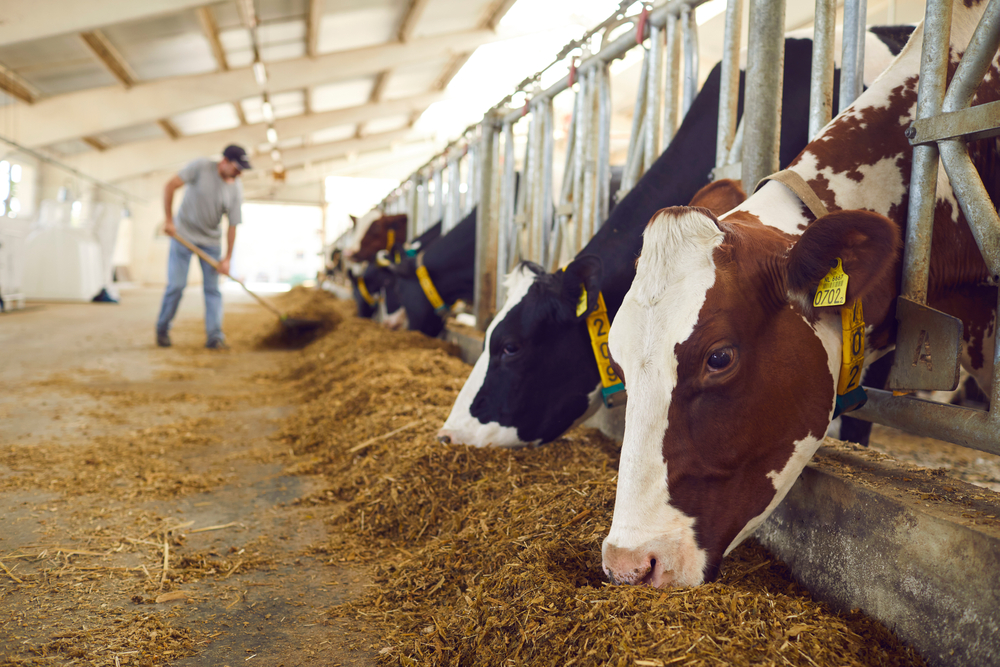
Do Beef And Dairy Cattle Have The Same Dietary Requirements?
Before we dive into different feed options, it’s important to note that beef and dairy cattle have slightly different dietary requirements. Of course, they are both grazing herbivores, but that doesn’t mean they should be fed the same.
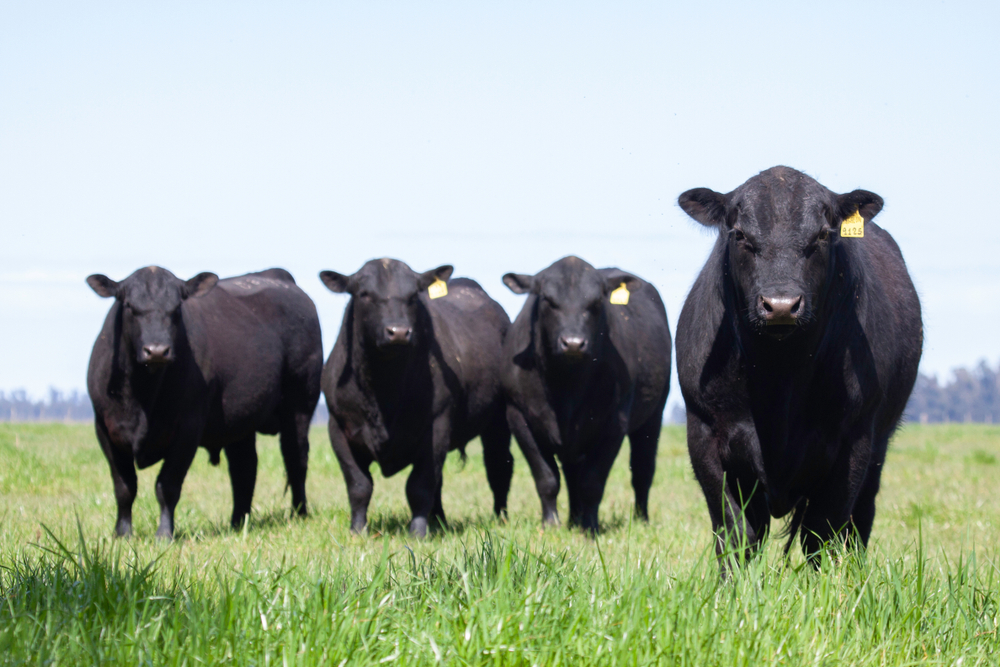
Both types of cattle need proteins, energy sources, minerals & vitamins, and water. However, beef cows only need enough energy to provide milk for their calves, while dairy cows need a higher-energy diet to produce large amounts of milk.
“As such, beef cattle should be given a roughage-based diet, while dairy cows need more energy sources like grain and oilseeds.”
All About Cattle Foraging
Foraging is a big part of cattle nutrition, or finding and eating food in the pasture. This natural behavior helps keep cattle healthy and provides many benefits. So, ranchers and livestock managers must keep an eye on the quality and management of their pasture.
Grass And Legume Grazing
Cattle can graze on various grasses and legumes, giving them the nutrients they need to stay healthy and grow. Using rotational grazing strategies, where cattle are moved between different pastures, helps maintain the quality of the pasture and ensures a continuous supply of nutritious food for the herd.
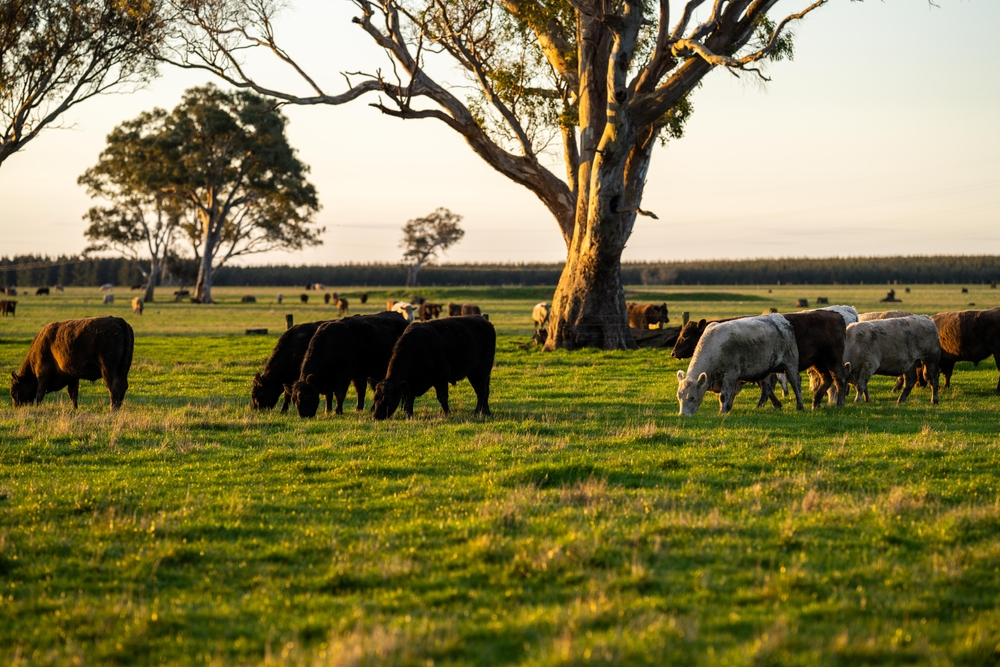
“From alfalfa to ryegrass, many different types of forage can provide cows with the energy they need. Legumes like alfalfa and clovers are especially beneficial because they contain more protein than most other species.”
Hay And Silage
Besides grazing, hay and silage are crucial parts of cattle feeding. These preserved plants offer a reliable source of nutrition, especially during seasons when fresh pasture isn’t available. To make the most of hay and silage, it’s important to store them properly. Adding supplements like minerals and vitamins to the fodder is also easy.
“Hay is made from mature grasses and legumes. When stored in a dry place, hay can last around two years, making it a versatile part of the cattle diet.”
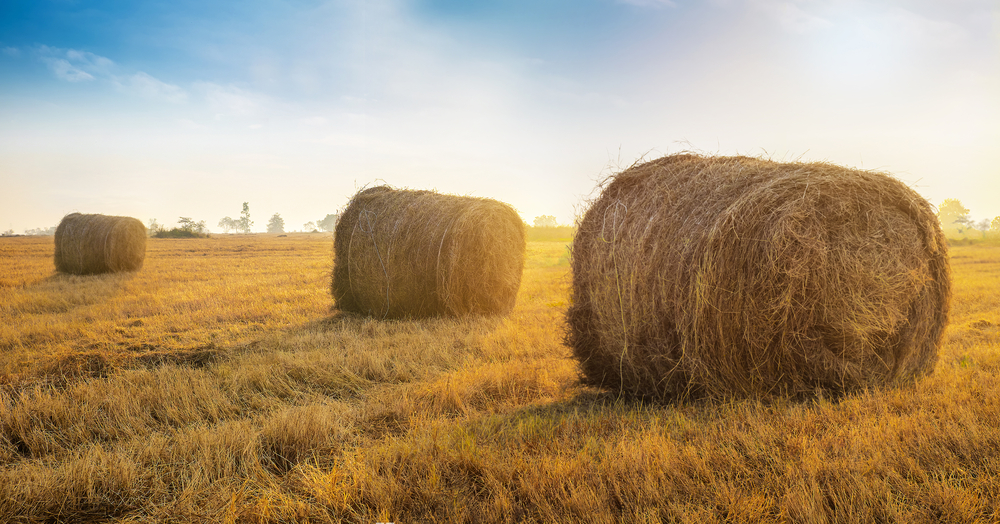
Grains And Concentrates
Besides foraging, hay, and silage, cattle can also digest grains and other concentrates.
Grains and concentrates are crucial in cattle diets because they give them energy and nutrients that complement the food they get from foraging. To give cattle a balanced diet, farmers need to mix forage and concentrates in the right way.
Here are some of the most common grains used in cattle feed:
Corn
Corn is a popular feed for cattle because it’s full of energy. It can be fed whole, cracked, ground, or steam-flaked, but farmers must be careful about how they feed it and how much they give to get the most benefits from corn in cattle diets. As a high-yielding crop, corn use is widespread in cattle feeding.
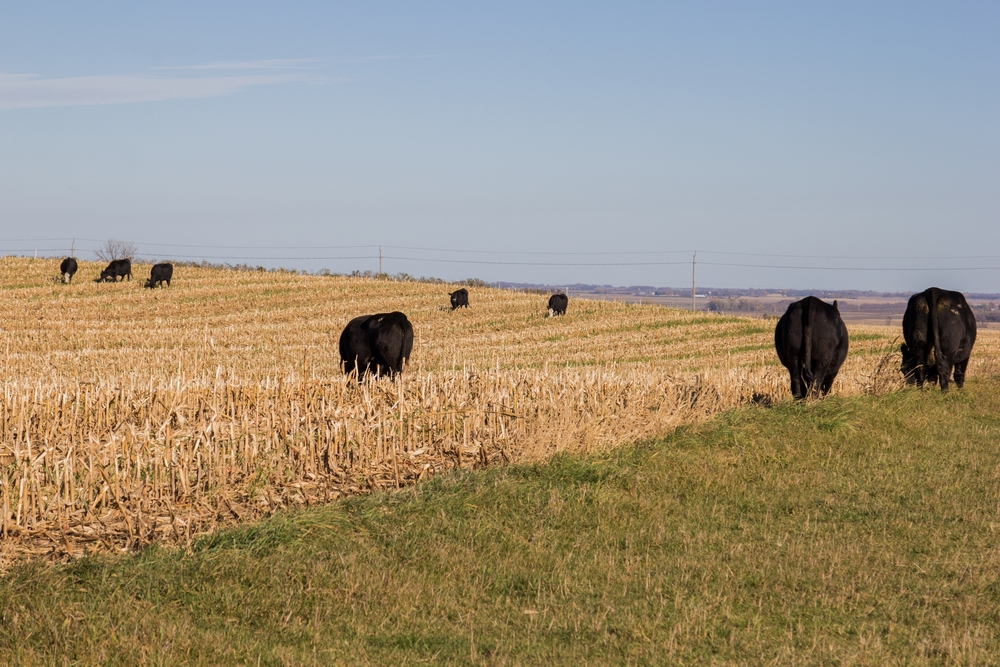
Sorghum
Sorghum is another grain suitable for cattle because it is drought-resistant, meaning it can grow even in areas where water is scarce. Sorghum is a good energy source, but it’s low in protein, much like corn.
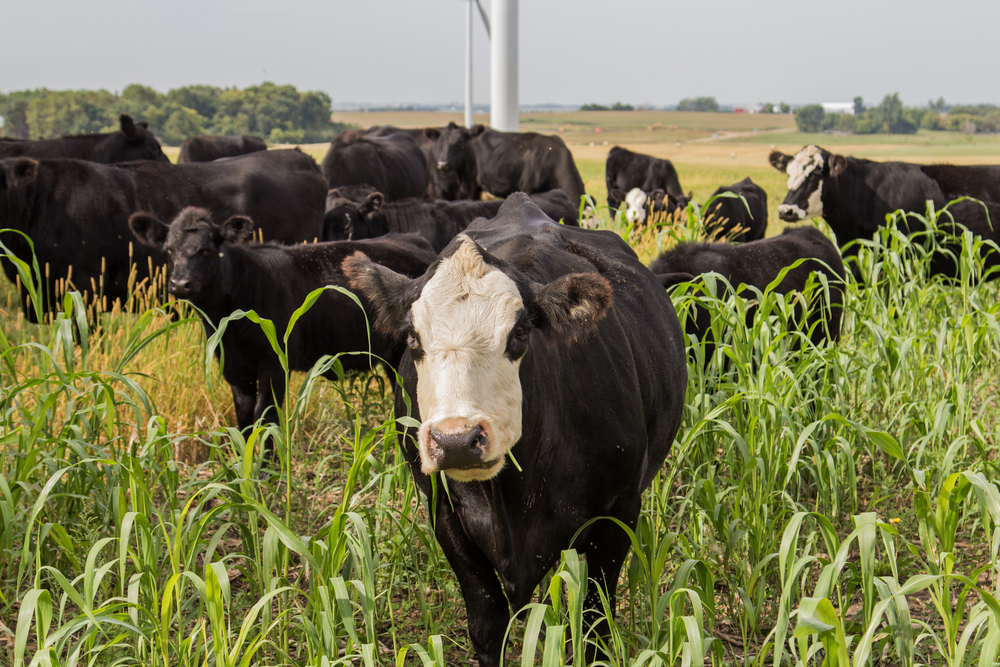
Barley
“Speaking of protein, barley is an excellent source of it.”
Barley is also rich in fiber and minerals, making it an ideal supplement for cattle diets. It is a valuable grain for cattle because it has a lot of nutritional value. Plus, it’s easy to digest.
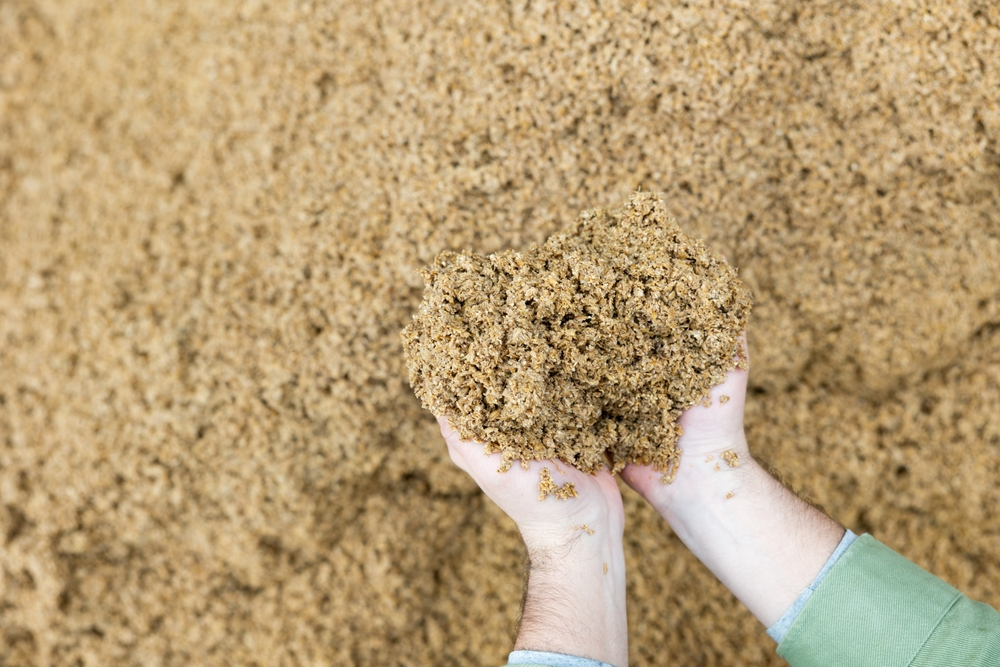
Oats
Oats have a lot of fiber and a balanced mix of nutrients for cattle. They come in various forms, from whole oats to rolled and ground meals. Oats are also high in energy and provide cows with the needed proteins.
Wheat
Wheat is another grain that provides a lot of nutrition to cattle.
“However, your animals may be tempted to overeat it because it’s especially tasty. Monitor their intake carefully if you’re feeding them wheat.”
Byproduct Feeds
Byproduct feeds, like distillers’ grains and soybean hulls, can be a smart addition to cattle diets because they have a lot of nutrition and are cost-effective. These feeds are made from food and beverage production byproducts, like grain leftovers from beer breweries. When fed correctly, byproduct feeds can supplement cattle diets with essential nutrients.
Understanding Supplements And Additives
Finally, supplements and additives can be used to ensure that cows have the right balance of nutrients. Common supplements include minerals like salt, calcium, phosphorus, and magnesium. Vitamins like A, D3, E, B12, and other vitamins are also important for cattle health.
Protein Supplements
Protein supplements, such as soybean meal and cottonseed meal, can provide extra protein to help cattle grow and reproduce. Using protein supplements correctly is vital to maintaining a balanced diet and avoiding potential health problems.
“Another popular option is non-protein nitrogen, a synthetic compound that helps cows produce proteins in their bodies. Non-protein nitrogen can also improve digestion and overall health.”
Mineral And Vitamin Supplements
Cattle can sometimes have mineral and vitamin deficiencies, hurting their health and performance. Supplements, like mineral blocks or vitamin injections, can help fix these deficiencies and support overall health.
“Cattle mostly need salt, calcium, and phosphorus to stay healthy. They can get them from limestones, bone meals, or other mineral supplements.”
Rations And Diet Formulation
Knowing what to feed your cattle is only the first step. Formulating a balanced diet is the challenging aspect of maintaining a healthy herd. Like humans, cattle need the right balance of nutrients to thrive.
A well-formulated diet keeps them healthy and optimizes their growth, reproduction, and milk production. In the long run, balanced rations translate into a more profitable cattle operation. So, how do you ensure your cattle get the right mix of nutrients?
Balancing Nutrients
Formulating rations for optimal nutrition involves considering several factors.
“Start by balancing the three main components: energy, protein, and fiber. Too much or too little of these can lead to health issues and decreased productivity.”
- First, consider your cattle type – beef or dairy – and their specific needs. For instance, dairy cows require more energy and protein than beef cattle to support milk production.
- Next, consider the production stage, such as growth or lactation, as nutrient requirements change over time.
- Finally, factors in environmental conditions like temperature and humidity can affect the cattle’s nutritional needs.
Feed Efficiency In Beef And Dairy Cattle
Does the term “feed efficiency” ring a bell? It’s a critical aspect of cattle production profitability.
“Simply put, feed efficiency is the ability of cattle to convert feed into valuable products, like meat or milk. The more efficient your cattle are, the lower your feed costs and the higher your profits.”
Feed efficiency factors include genetics, age, health, and diet quality. To enhance feed efficiency, consider selecting cattle breeds with better genetic potential, providing proper health care, and offering balanced, high-quality diets.
Meeting Specific Nutrient Requirements For Different Stages Of Production
Did you know cattle have different nutrient requirements throughout their lifecycle? Each stage – growth, reproduction, and lactation – has unique needs. It’s essential to adjust their rations accordingly to keep your cattle in top shape.
For example, calves need more protein during growth to develop strong muscles and bones.
Pregnant cows, on the other hand, require additional nutrients to support fetal development. And let’s remember lactating cows, which need extra energy and protein to produce milk.
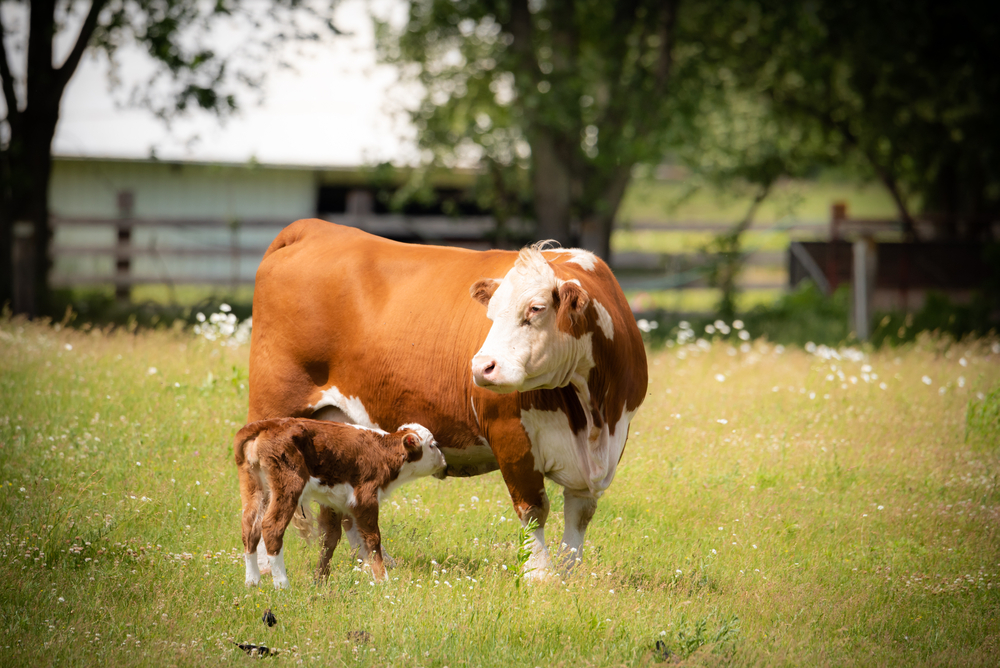
“Fattening cattle should eat 2-3% of their body weight in high-energy feed like corn and barley.”
Feeding Management Practices
Proper management is just as important as nutrition when it comes to feeding cattle. Feeding management goes hand in hand with diet formulation.
Feed Bunk And Trough Feeding
“Feed bunks and troughs are popular options for delivering rations to cattle. They allow for controlled feeding, making monitoring intake easier and adjusting rations as needed.”
Feed bunks and troughs can help reduce feed waste and provide a clean feeding area. They also allow for better observation of cattle, making it easier to spot health issues early on. However, proper management is essential to prevent overcrowding or aggressive behavior among cattle.
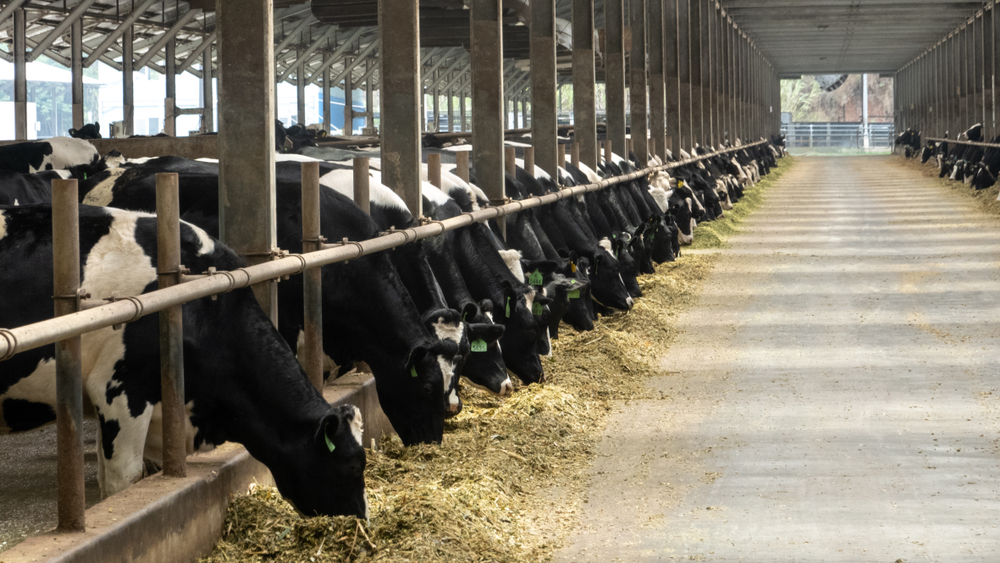
Ensure you have enough space for all your cattle to eat comfortably, and clean the feeding areas regularly to maintain hygiene.
Free-Choice Feeding
As the name suggests, free-choice feeding allows cattle to eat as much as they want whenever they want. This method has benefits, like reducing labor costs and stress on cattle.
“One concern with free-choice feeding is overeating, which can lead to obesity and health problems.”
To prevent this, provide a balanced diet and closely monitor your cattle’s body condition. You can also add salt and minerals to the feed, which helps control intake. Lastly, ensure that feeders are well-maintained and clean to minimize waste and spoilage.
Total Mixed Rations
“Next, we have total mixed rations (TMR). It’s a feeding method that combines all feed ingredients into a single, homogenous mix.”
TMR offers several benefits, including consistent nutrient intake, reduced waste, and improved feed efficiency.
Start by determining the right balance of energy, protein, and fiber for your cattle based on their type, production stage, and environmental conditions. Then, mix the ingredients uniformly to ensure each bite contains the same nutrients. Finally, deliver the TMR to your cattle using suitable equipment like a feed mixer wagon.
Pasture Management
Pasture management plays a vital role in cattle nutrition, as a well-maintained pasture provides high-quality forage, reducing the need for supplemental feed. Implement strategies like rotational grazing, proper fertilization, and weed control to enhance forage growth and quality.

You should also monitor your cattle’s grazing patterns. This information will help you adjust your management practices to prevent overgrazing or uneven grazing.
Final Thoughts
In conclusion, we’ve learned that proper nutrition is crucial for beef and dairy cattle’s health, growth, and productivity. By understanding the different dietary requirements and feeding options, we can provide balanced diets that keep our herds thriving. Adopting appropriate feeding management practices can enhance feed efficiency and reduce costs.
The future of cattle feeding will see innovations in several areas. Alternative feed sources like insect protein and industrial byproducts will help lower costs and reduce environmental impacts. Precision feeding and technology will enable ranchers to optimize nutrient intake for individual animals. And genetics and breeding advancements will lead to optimal feed efficiency for cattle.
The HerdX® team recognizes independent cattlemen’s challenges and is dedicated to developing technologies that revolutionize livestock management. We focus on efficiency, productivity, and profitability, with solutions that aim to support cattlemen in maintaining healthy herds while maximizing their returns. Contact us today to learn more about how HerdX® can help you optimize your cattle feeding and management practices.

